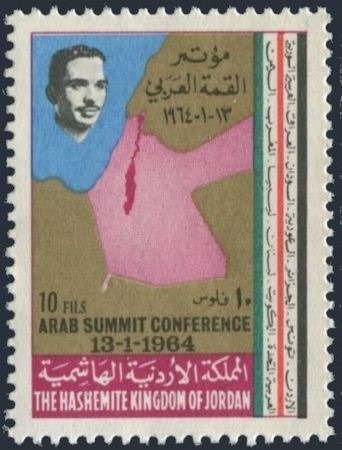History of Jerusalem: Jordanian Annexation of the West Bank
(April 24, 1950)
In May 1948, the Jordan’s Arab Legion overran the eastern part of Jerusalem and occupied the Old City and its Holy Places. Following the 1948 War, Jordan continued to occupy East Jerusalem and what is now commonly referred to as the West Bank. This included the area the UN partition decision had allotted for an Arab state.
Rather than seek independence for a Palestinian state, the Arabs from the area allotted for an Arab state in the UN partition resolution agreed to the unification of Palestine with Jordan and swore fealty to the king at the Jericho Conference on December 1, 1948.
On April 11, 1950, elections were held for a new Jordanian parliament in which the Palestinian Arabs of the West Bank were equally represented. On April 24, 1950, the Jordan House of Deputies and House of Notables, in a joint session, adopted the following resolution annexing the West Bank and Jerusalem:
According to the Kingdom of Jordan’s website, the objective was “to safeguard what was left of the Arab territory of Palestine from further Zionist expansion.” Abdullah had long coveted all of Palestine as part of his desire to rule over Greater Syria and, as the stamp below illustrates, he and his successor believed Israel was part of that vision.
King Abdullah acted over the objections of the Arab League. Great Britain and Pakistan were the only countries that recognized Jordan’s annexation and occupation.
Two-thirds or more of King Abdullah’s subjects in the new combined Kingdom were Palestinians and one-third, or slightly less, native Jordanians. The total population was estimated at between 1 and 1.2 million, comprised of roughly one-third Palestinians resident in their own homes West of the Jordan River, one-third Jordanians and one-third refugees from parts of Palestine that are now within Israel. According to Jordan’s website, “All automatically became citizens of Jordan, a right that had first been offered in December 1949 to all Palestinians who wished to claim it.”
During the nineteen years of Jordanian administration, Jordan refused to honor its undertaking in the armistice agreement to accord free access to the Holy Places and to cultural institutions, and use of the Jewish cemetery on The Mount of Olives (Section III, Document 6, Article VIII, and Section V, subsection E, Documents 15 and 16). Jews were barred from the Old City and denied access to the Western Wall and other Holy Places. The Jewish Quarter in the Old City was destroyed; fifty-eight synagogues were also destroyed or desecrated. Thousands of tombstones in the Jewish cemetery on The Mount of Olives were destroyed to pave a road and build fences and latrines in Jordanian army camps.
Muslim residents of Israel were not permitted to visit their Holy Places in East Jerusalem. Christians, too, were discriminated against. In 1958, Jordanian legislation required all members of the Brotherhood of the Holy Sepulcher to adopt Jordanian citizenship.
As early as 1950, Israel complained to the Security Council that Jordan was consistently evading the implementation of Article VIII. After more than one futile attempt to change Jordan's attitude, Israel decided to invoke Article VIII and asked the Secretary-General to convoke a conference of representatives of the two parties.
n 1965, Christian institutions were forbidden to acquire any land or rights in or near Jerusalem. In 1966, Christian schools were compelled to close on Fridays instead of Sundays, customs privileges of Christian religious institutions were abolished.
During the Jordanian occupation, Jerusalem was bisected by barbed wire, concrete barriers and walls. On a number of occasions Jordanian soldiers opened fire on Jewish Jerusalem. In May 1967, the Temple Mount became a military base for the Jordanian National Guard.
After Israel reunified Jerusalem and captured the West Bank in the Six-Day War, King Hussein insisted, “The truth is that Jordan is Palestine and Palestine is Jordan.”

Jordan not only believed that Jordan is Palestine, this stamp from 1964 illustrates the kingdom considered Israel part of Jordan as well.
Sources: Israeli Ministry of Foreign Affairs;
“Jordan Assembly to Unify Country,” New York Times, (April 24, 1950);
A-Nahar al-Arabia, (November 26, 1981)


